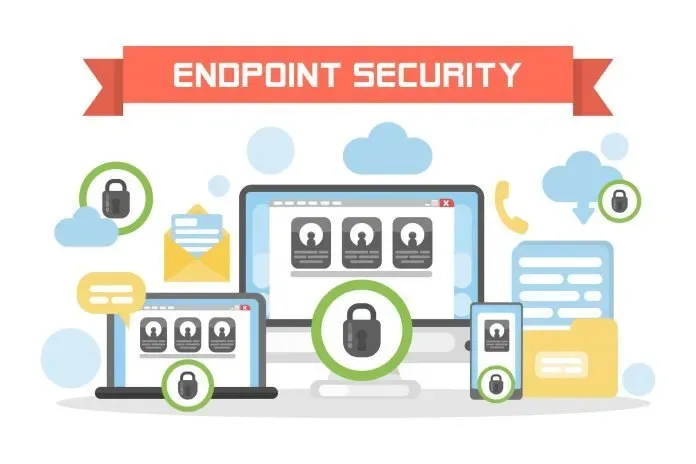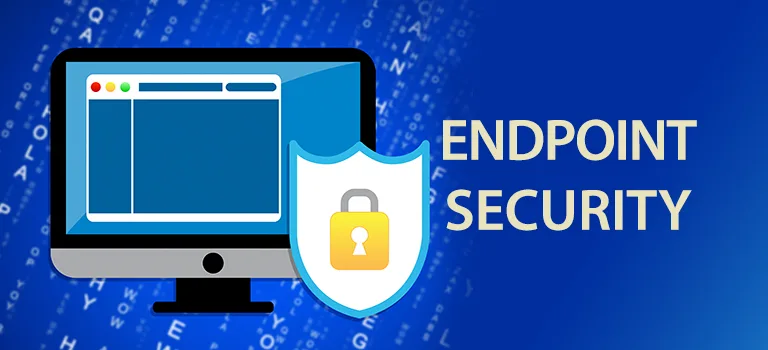
Here’s a complete guide to what is endpoint security? In the late ’80s and early ’90s, cybersecurity was far less complex. Attacks were fewer and less sophisticated, and antivirus programs had a simple mission: detect and block malicious code.
Fast forward to today, antivirus software comes standard on most business devices, yet the frequency and severity of data breaches have surged.
According to the Ponemon Institute, 68% of organizations have faced at least one endpoint attack that compromised their IT infrastructure or sensitive data. Verizon further reports that 30% of breaches involve malware installed on endpoints connected to company networks.
These statistics underscore the need for more advanced defenses than traditional antivirus solutions—specifically, endpoint security platforms.
When comparing endpoint security vs antivirus, the main difference lies in scope: antivirus focuses on stopping individual threats, while endpoint security protects the broader network, recognizing that even one compromised device can endanger the entire organization. The stakes are high—some companies see their market value drop by 25% or more following a cyberattack.
What is Endpoint Security?
Endpoint security (EPS) combines and automates multiple protective measures—including antivirus, firewalls, intrusion detection, encryption, and behavioral analysis—to secure workstations, servers, and other devices from evolving cyber threats.
Every endpoint—whether a laptop, smartphone, IoT device, or data center server—serves as a potential entry point for attackers. Endpoint security solutions defend these gateways through centralized management, allowing administrators to enforce global security policies, run endpoint scans, and carry out key administrative tasks. This ensures the system remains safeguarded even if a single device is compromised.
Unlike traditional antivirus, which usually works on an on-access model (triggering scans when files are accessed or initiated manually), endpoint security platforms deliver far more sophisticated protection. They go beyond malware detection to include malicious URL filtering, DNS cache hijack prevention, and monitoring of suspicious network behavior such as command-and-control (C2) communications.
Why Is Endpoint Security Important?
Every device employees use to connect with a business network poses a potential entry point for cybercriminals. These devices—known as endpoints—are multiplying rapidly, making the challenge of securing them more complex than ever. For this reason, businesses must deploy endpoint security solutions to protect what is often their most vulnerable frontline in cybersecurity.
Key Benefits of Endpoint Security
1. Comprehensive Protection for All Endpoints
With employees using an ever-expanding range of devices to access corporate networks, securing these endpoints is non-negotiable. Endpoint security ensures that all devices—whether laptops, smartphones, or IoT tools—remain secure. It also protects sensitive data stored on them, preventing loss, theft, or unauthorized access.
2. Security for Remote Work and BYOD Policies
The modern workplace embraces remote work and bring-your-own-device (BYOD) policies, allowing employees to stay productive anywhere and on any device. However, this flexibility also introduces security risks. Endpoint security platforms provide a protective shield, ensuring remote and BYOD users operate safely without creating exploitable vulnerabilities for hackers.
3. Defense Against Sophisticated Cyber Threats
Attackers today use increasingly advanced methods to infiltrate corporate networks, steal sensitive data, and trick employees into revealing confidential information. Endpoint security leverages advanced threat detection and prevention technologies to safeguard enterprises from these evolving cyber threats.
4. Identity and Access Protection
Traditional perimeter-based security models are no longer sufficient in a distributed workforce. Employees connect to business systems from diverse networks and locations, leaving identity and access security as critical concerns. Endpoint security ensures that security measures travel with the device, allowing employees to work safely and securely—no matter where they are or how they connect.
How Does Endpoint Security Work?
The primary objective of any endpoint security solution is to safeguard corporate data and workflows across all devices connected to the network. It achieves this by:
- Scanning incoming files and comparing them against a continually updated cloud-based threat intelligence database.
- Providing centralized management through a console installed on a network or server. From this hub, system administrators can monitor, control, and enforce security across every connected device.
- Deploying client software on endpoints (either remotely or locally) to push critical security updates, validate login attempts, and enforce organizational policies.
Key Functions of Endpoint Security
- Application Control
Prevents users from downloading or accessing unsafe or unauthorized applications, reducing the risk of malware infiltration.
- Data Encryption
Ensures sensitive information remains secure, even if a device is lost or stolen.
- Threat Detection & Response
Detects common threats like malware while also offering advanced monitoring and response capabilities for modern attacks.
This advanced functionality not only improves visibility across the network but also equips organizations with a variety of real-time response options to contain and remediate threats effectively.
What Is an Endpoint?
An endpoint is any device that allows a user to connect to a corporate network. With the rapid rise of Bring Your Own Device (BYOD) policies and the Internet of Things (IoT), the number and diversity of endpoints have grown exponentially—making security more complex.
Common Examples of Endpoints
- Computers & Devices: Laptops, desktops, tablets, mobile phones
- Business Equipment: Printers, servers, ATMs
- IoT & Smart Devices: Smartwatches, wearables, industrial machines, medical devices
- Connected Systems: IoT-enabled sensors and tools used in manufacturing, healthcare, and finance
Endpoints are no longer limited to just laptops and smartphones—they now include any connected device capable of accessing a network. Because each of these serves as a potential entry point for cybercriminals, organizations must secure all devices, not just the traditional ones.
As endpoints continue to evolve in sophistication, so too must the endpoint security solutions that defend them—ensuring comprehensive protection against ever-advancing threats.
Conclusion
In today’s hyperconnected world, every device that touches your corporate network represents both an opportunity for productivity and a potential gateway for cyber threats. Traditional antivirus alone is no longer enough to combat modern, sophisticated attacks. Endpoint security provides the comprehensive defense businesses need—combining threat intelligence, real-time monitoring, behavioral analysis, encryption, and centralized management to secure every device, from laptops to IoT sensors.
By adopting a robust endpoint security strategy, organizations not only protect sensitive data and maintain regulatory compliance but also strengthen trust with customers and stakeholders. In short, endpoint security is no longer optional—it’s an essential pillar of a resilient, future-proof cybersecurity posture.



